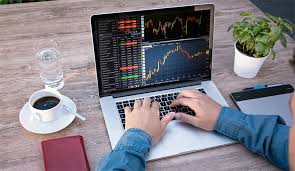
Mastering Forex Trading with MT4: A Comprehensive Guide
Forex trading has evolved significantly over the past two decades, becoming one of the most popular forms of investment worldwide. Thanks to the technological advancements and the rise of online trading platforms, traders can access global markets 24/5 from the comfort of their homes. One of the most popular trading platforms among forex traders is MetaTrader 4 (MT4). This article aims to guide you through the essentials of trading Forex with MT4, including setup, strategies, indicators, and risk management. For more detailed insights and resources, check out forex trading with mt4 trading-bd.com.
What is MT4?
MetaTrader 4 is a trading platform developed by MetaQuotes Software in 2005. Although it was initially designed for Forex trading, it now supports several other instruments, including commodities, indices, and cryptocurrencies. MT4 is renowned for its user-friendly interface, advanced charting capabilities, and wide range of technical analysis tools. The platform also supports automated trading through Expert Advisors (EAs), which are scripts that execute trades based on predefined market conditions.
Setting Up Your MT4 Account
To start trading on MT4, you need to follow these steps:
- Choose a Forex Broker: Select a broker that supports MT4 and offers favorable spreads and trading conditions. Check their regulatory status to ensure legitimacy.
- Create an Account: Sign up with your chosen broker by providing the necessary personal information. Most brokers offer demo accounts that allow you to practice without real money.
- Download and Install MT4: Once your account is set up, download the MT4 platform from your broker’s website or the MetaQuotes website. Install the application on your computer or mobile device.
- Login to Your Account: Launch MT4 and log in using the account credentials provided by your broker.
Understanding the MT4 Interface
Familiarizing yourself with the MT4 interface is crucial to maximizing your trading effectiveness. Here are the key components:
- Market Watch: This window displays the live prices of various currency pairs and other instruments. You can customize this window to show only the pairs you are interested in.
- Chart Window: MT4 provides advanced charting functions, allowing you to analyze market movements through different timeframes and chart types (line, bar, or candlestick).
- Navigator: This panel contains your accounts, indicators, EAs, scripts, and custom indicators. You can easily access these tools to enhance your trading experience.
- Terminal: The terminal window is where you find your account balance, margin levels, open trades, and order history. It also displays trade alerts and news feeds.

Commonly Used Technical Indicators
Technical indicators are essential tools in Forex trading as they help traders analyze price movements and make informed decisions. Here are some commonly used indicators on MT4:
- Moving Averages: Used to identify trends, moving averages smooth out price data by creating a constantly updated average price.
- Relative Strength Index (RSI): A momentum oscillator that measures the speed and change of price movements, helping to identify overbought or oversold conditions.
- MACD (Moving Average Convergence Divergence): This popular trend-following momentum indicator shows the relationship between two moving averages of a security’s price.
- Bollinger Bands: These consist of a middle band (SMA) and two outer bands that illustrate volatility. The bands widen when the market is volatile and contract during less volatile periods.
Developing a Trading Strategy
A successful trading strategy is built on thorough analysis and consistent application. Here are key components to consider:
- Define Your Goals: Determine your financial goals, risk tolerance, and time investment to create a strategy that aligns with your trading style.
- Select Your Trading Style: Choose from day trading, swing trading, or long-term investing based on your availability and risk appetite.
- Incorporate Technical and Fundamental Analysis: Use a combination of technical indicators and fundamental news events to make informed trading decisions.
- Practice with a Demo Account: Test your strategy on a demo account to refine your approach and gain confidence before trading with real money.
Risk Management in Forex Trading
Managing risk is vital in Forex trading to protect your capital. Here are some essential risk management techniques:
- Set Stop-Loss Orders: Always use stop-loss orders to limit potential losses. Determine your exit point before entering a trade.
- Position Sizing: Control the size of your trades based on your account size and risk tolerance. A typical recommendation is to risk no more than 1-2% of your account on a single trade.
- Diversify Your Portfolio: Don’t put all your capital into one trade or currency pair. Diversification can help mitigate risks and potential losses.
- Regularly Evaluate Performance: Periodically review your trades to identify strengths and weaknesses. Adjust your strategy accordingly to improve performance.
Conclusion
Forex trading with MetaTrader 4 offers traders unparalleled access to global markets and advanced analytical tools. By understanding the platform’s features, mastering technical indicators, implementing robust trading strategies, and managing risk effectively, traders can enhance their trading experience and increase their chances of success. Remember that continuous learning and practice are vital to becoming a proficient Forex trader. Embrace the journey, and may your trades be profitable!
